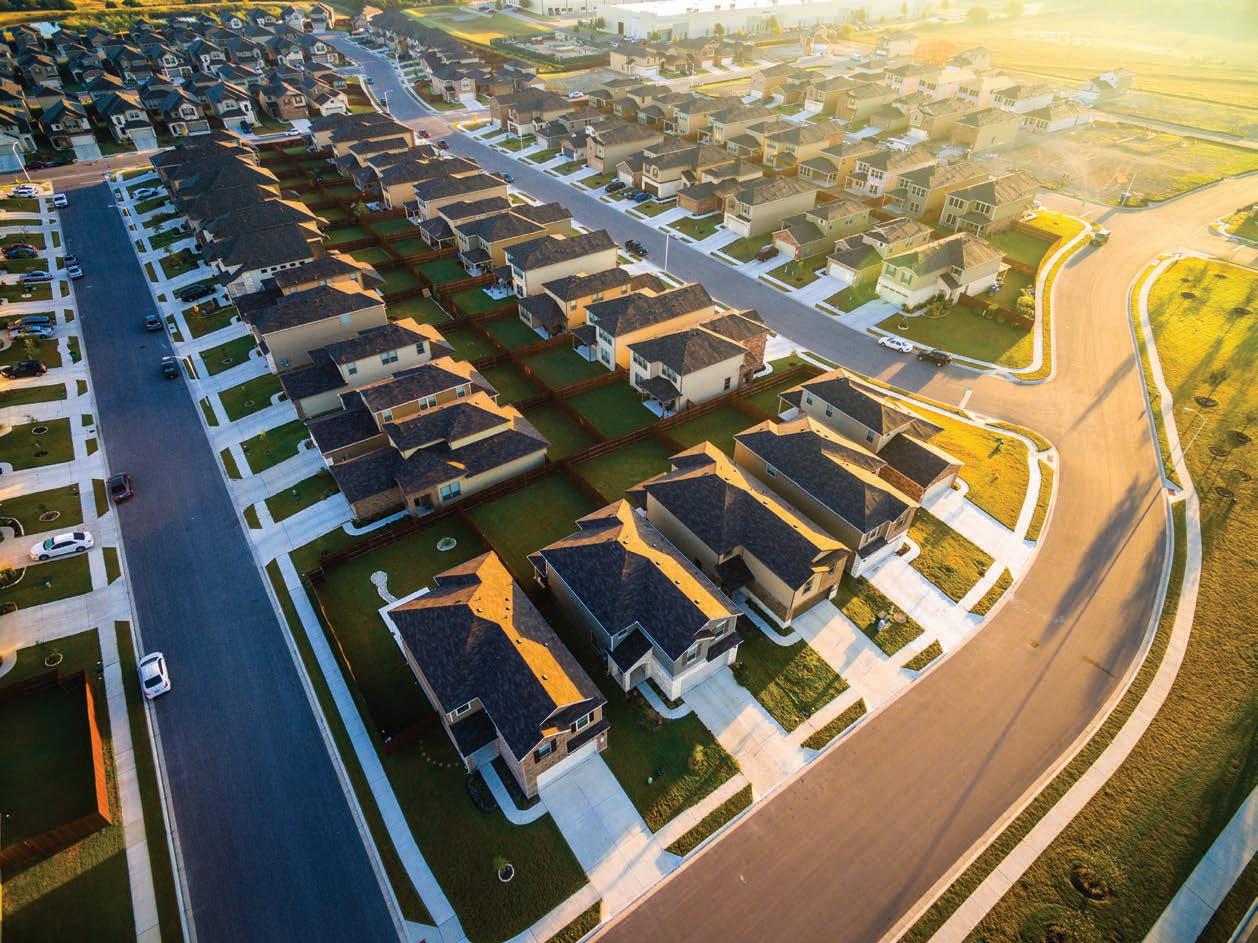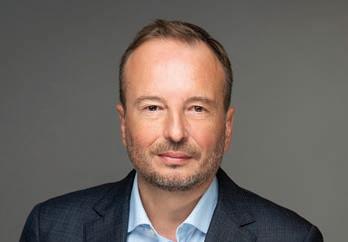
10 minute read
A Market–Leading Market
Rudy Saadi Head of MENA Equity Capital Markets at Citi tells MEA Finance that with high quality assets on the market, strong IPO activity backed by an encouraging pipeline and a growing secondary market, the regional equity capital markets have become a beacon for regional and international investors
Advertisement
There is no doubt that we are running through a global inflationary and heightened volatility environment but inflation in the GCC remains well below Emerging Markets, Europe and the US, so the state of the economies in the Middle East is relatively healthy compared to the rest of the world. Investors are looking at core fundamentals such as the USD currency peg, the fiscal surplus, the higher oil price, the young population and the overall reforms which provide fiscal support and investor confidence especially in the UAE and Saudi Arabia. On top of that, the quality of the assets that came to the market is solid, liquidity is much higher and most of IPOs have traded well in the aftermarket when global issuance was almost muted.
There have been notable IPO’s in the Middle East in the first half of 2022, how is deal pipeline looking like for the coming year or so?
Yes, there was about $15bn of IPO issuance in the Middle East in H1-22,
Rudy Saadi, Director, Equity Capital Markets, Citi
an impressive number. The pipeline is encouraging with at least 10 IPOs expected to come to the market in the next 12 months, in various sectors, on the condition they all receive regulatory approval on time. In fact, the queue is much longer given the privatisation programme in parts of the region, regulators are rightfully cautious on not crowding the market to avoid IPOs launching in the same window, so some IPOs scheduled for H2-22 could launch in Q1 or Q2 of next year. If market fundamentals remain supportive without any macro or geopolitical shocks in the region, the Middle East pipeline will hold.
MENA is a bright spot for international and regional investors. The region is surely not immune, we have seen a correction in GCC markets earlier in the summer due to the global risk-off sentiment and the interest rates hikes, however the recent rebound underlines the healthy status of the largest Middle Eastern economies compared to other markets. Foreign inflows towards the GCC in 2022 YTD have reached new highs in Saudi, UAE, Qatar and Kuwait and in some instances surpassing the 2021 level which was a solid year for the Middle East.
Absolutely. Despite all the recent activity and the increase in FDI, the MENA region remains well underinvested by international investors. The foreign ownership in Saudi Arabia is gradually increasing given the interest from global investors however this remains below 10%, Dubai and Abu Dhabi are slightly above that level, but this is considered low compared to other Emerging Markets and well below South Africa for example. Some public companies in the region have already announced the increase or removal of the foreign ownership cap which should pave the way for more ECM activity. In addition to that, the GCC governments have done an excellent job in promoting their local exchanges, this will continue to support the pipeline and IPO activity in the region. I think the next step is for private companies which are not government linked to come to the market which will support the pipeline in the long-term. We have seen several international investors opening offices in the Middle East and moving portfolio managers or analysts to the region, some investors have even
established dedicated MENA funds given the increased focus towards the region. Assuming no global macro shocks that directly impacts the Middle East, the ECM activity is here for the long-term, perhaps at a slower pace depending on market conditions and who is ready to go public.
Do you expect to see growth in secondary market activity in the region?
Credit to the regulators and the local exchanges, the rules and guidelines for ECM issuance especially for IPOs have been enhanced facilitating the higher activity. Given the number of IPOs recently priced, it is only a matter of time before we start seeing more activity in the secondary market i.e., Accelerated Equity Offerings, Fully Marketed Offerings, Exchangeable Bonds issuance etc. For example, ADNOC $1.6bn Combined offering into ADNOC Distribution in May 2021 (Accelerated Equity Offering combined with an Exchangeable Bond) was the first ever combined offering in the GCC region. STC’s $3.2bn Fully Marketed Offering in December of last year was also the first in the region, paving the
way for similar offerings in the future. GCC investors showed an understanding of such issuances and participated in size. Now to see sustainable growth in the secondary market with similar transactions, we require a clear set of guidelines from GCC regulators allowing all types of secondary offerings, including how we can include Retail investors in such deals, whether filing a prospectus is always required, how much we can offer in primary issuance if needed, the rules around setting a price range, what is the maximum discount we can offer, how many investors we can wall-cross etc. We tend to recommend the ideal execution model and take verbal approval from regulators but what we require is a clear set of guidelines outlining the rules around secondary issuances which should open the door for issuers and/or shareholders to regularly come to the market when they need to raise capital. Once we have a set of successful precedents, the activity in the secondary market will become more sustainable.
Right Time, Right Place
The region’s markets are in a good place at this time says Arjun Mittal Founder and CIO, Abbey Road Investment Group, reflecting good fundamentals with many reasons that this success will continue
I would assign the growth in investor confidence this year to three broad themes.
Firstly, the region has been a beneficiary of rising energy prices, rebounding tourism and generally excellent covid management leading to an influx of capital, liquidity and talented labour. This has helped key sectors like energy, hospitality, banks and real estate to post good results and importantly point to a positive outlook going forward. This is in sharp contrast to other parts of the world where companies and governments face stern challenges.
Secondly, regional equity markets did not see valuations reach the same euphoric levels witnessed in the USA and other markets. This meant they were less susceptible to a large correction or bouts of irrational investor panic. Even after the recent increase in regional indices, price-to-earnings ratios, as an example, are still showing reasonable levels of 10-15x, versus 20-25x for US indices.
Finally, the Middle East has also seen some excellent IPOs in recent times - year to date approx. $13bn has been raised – and there remains a healthy pipeline of listings

Arjun Mittal, Founder and CIO, Abbey Road Investment Group
to come. This has helped to retain regional investor confidence and also bring in new international investors. We find this all the more impressive considering it has generally been a tough year for equity markets and IPOs around the world.
Markets tend to be a good reflection of the underlying economic fundamentals, and I don’t believe the Middle East is any
different. The region currently has found a good mix of economic growth, stability of policies, strong domestic investment programs and an influx of people and capital.
Another satisfying outcome so far in 2022 has been how regional economies have absorbed the pressure of higher US interest rates. On previous occasions, as US interest rates move higher, local rates tend to also move higher in tandem and this leads to a squeeze on liquidity and economic activity. But this time round regional economies have managed to keep liquidity plentiful and economic activity on track. There are many reasons for this, but a key factor is definitely the proactive measures taken by regional governments to manage covid and keeping their economies open and functioning, without compromising safety, compared to other parts of the world.
Equity capital markets are reflecting the sounder footing that the region finds itself on currently.
There are lots of reasons to be confident that the current success can continue. I am not saying every year will post positive gains. But I do believe the template of reinvesting oil & gas dollars back into the economy, in hard and soft infrastructure will boost productivity, and act as magnet for companies from all over the world to establish operations in the region. This, in turn, leads to an upskilling of the population which naturally drives consumption and further investment from the private sector. Equity capital markets will be a natural beneficiary of this virtuous cycle of investment and consumption.
At a more micro level, the trend of government-related companies and successful regional business houses to IPO on domestic exchanges is also a positive long-term development for equity capital markets. Any move to improve the diversification and bench strength of domestic exchanges will reinforce the attraction for investors, hopefully creating another virtuous cycle of capital inflow and opportunity.
How are GCC and Middle East- based investors with assets outside the region responding to the current uncertainties of today’s world?
Every investor is different, with varying return and liquidity requirements. However, at an aggregated level, most
investors appreciate the value of diversification. And so, this means they continue to look both at regional and international opportunities.
Internationally, assets like fixed income and prime real estate have traditionally taken up a good share of an investor’s wallet. And we continue to see funds flow into these areas, which tend to be a ‘safer’ place to put money in times of economic uncertainty. Key European cities like Paris, Madrid, Berlin and London along with growth centres in the USA (Texas, Florida, North Carolina for e.g.) have been popular amongst investors looking for real estate investments. Diversified real estate funds issued by prominent financial houses have also scooped up funds from regional investors.
For investors with longer term horizons (3+ years), we are seeing fresh investments into blue chip equity companies like Microsoft, Alphabet, Berkshire Hathaway etc. Hindsight is often a destructive tool, but history does suggest buying global leaders after they have dropped 20% in price is generally a good recipe to generate future returns.
In addition, investors are also looking for opportunities in private markets, investing in companies with upbeat outlooks and new technologies or products. This type of alternative investment, if done well, has shown that it can generate excellent returns over time. The USA remains a prime destination for
private markets, but we are also seeing investor interest in Europe, India and parts of Africa.
Interestingly, the region’s mix of stable exchange rates (for USD denominated investors) and pro-growth economic policies is a plus point for any international investor looking to diversify from their home market. This, combined with the relatively upbeat sentiment in the Middle East currently, is also encouraging investors to bring back some capital, whether to expand their business or for fresh investments. This is complimented by a whole tranche of new investors in the region who have moved for the easeof-business and better lifestyle on offer and are looking to deploy capital into regional opportunities. So, we are seeing GCC and Middle East investors taking advantage of international and regional trends to find the best investments that match their return and liquidity requirements.










